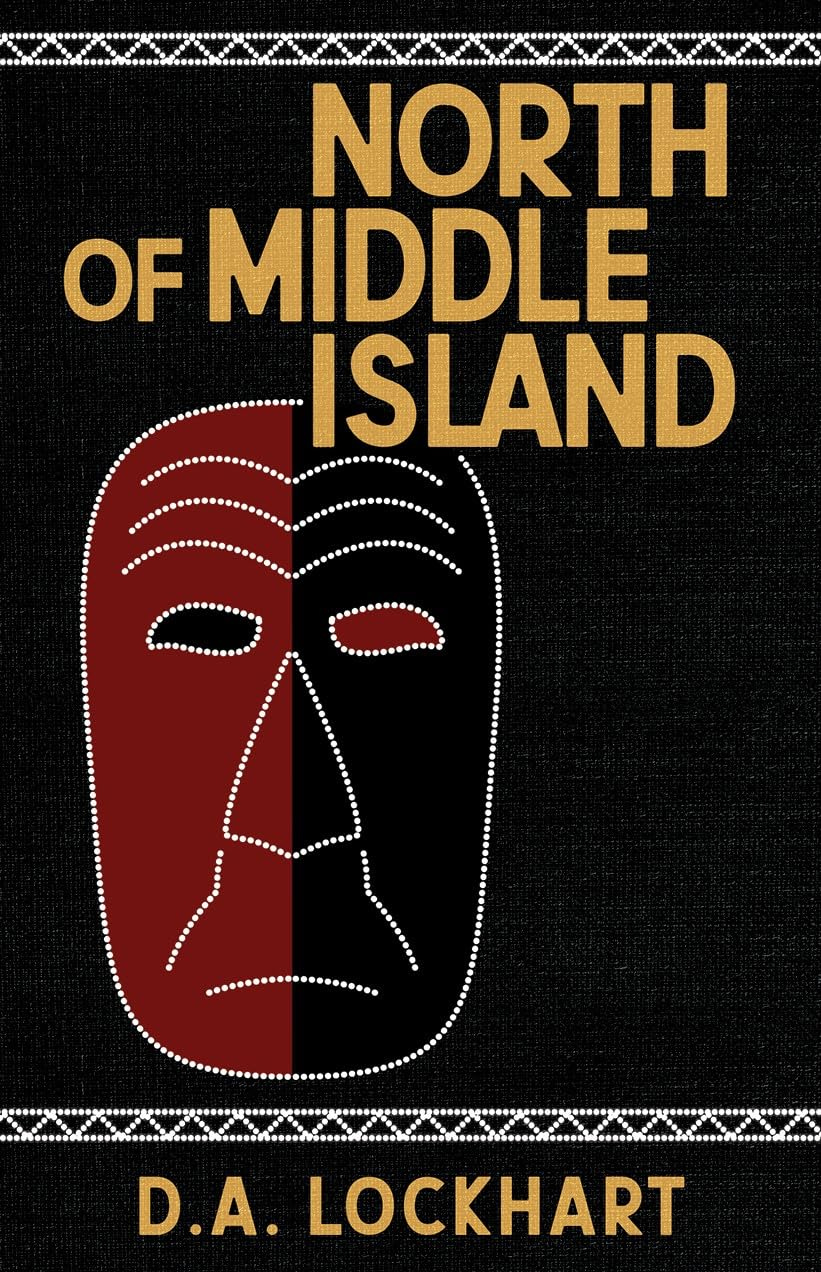[] Mays Landing, New Jersey, Is the Best Place to Retire in the State { e.preventDefault(); Mntl.utilities.loadExternalJS( externalJS , () => { Mntl.CMP.onSdkLoaded(() => { OneTrust.ToggleInfoDisplay(); }) }); }, { once: true }); }); Mntl.CMP.init({ isConsentRequired: true, oneTrustTemplateName: ‘ccpa’, showConsentBanner: false, isCcpaApplicableRequest: false, isTcfEnabled: true, scriptTimeout: 3000 }); })(); window.Mntl = window.Mntl || {}; Mntl.RTB = Mntl.RTB || {}; Mntl.RTB.setUseConsentManagement(false); Mntl.RTB.setIpAddress(‘51.81.34.52’) Mntl.RTB.setUseLiveRamp(true); Mntl.RTB.setUseLiveIntentSignedInUser(true); Mntl.RTB.setUseGDPREnforcement(false); Mntl.RTB.setUseCommerceAndShoppingAPSTag(false); Mntl.RTB.setUseAmazonNcaHookTest(false); Mntl.RTB.setTaxonomyStampValues({“tax1″:”tal_CultureDesign”,”tax0″:”tal_homepage”}); Mntl.RTB.setPrebidBidResponseTimeout(800); Mntl.RTB.setPrebidUserIdAuctionDelay(500); Mntl.RTB.setRtbLibraryLoadTimeout(750); Mntl.RTB.setAmazonTamBidResponseTimeout(1000); Mntl.RTB.Plugins.amazon.amazonConfigs = {“mapTaxValues”:{“tax1″:”tal_CultureDesign”,”tax2″:”null”,”si_section”:”null”,”tax0″:”tal_homepage”,”tax3″:”null”},”amazonSlotName”:false,”mapFBValues”:{“adunitid”:”mapFBID”}}; Mntl.RTB.Plugins.prebid.setPriceGranularity({“buckets”:[{“max”:”20″,”increment”:”0.05″},{“max”:”70″,”increment”:”1″}]}); Mntl.RTB.initVideoBidders([{ type: ‘amazon’, id: ‘3446’ }, { type: ‘prebid’, id: ‘true’ } ]); Mntl.RTB.initDisplayAndOutstreamBidders([{ type: “amazon”, id: ‘3446’},{ type: “msg”, id: ‘true’},{ type: “ixid”, id: ‘true’},{ type: “prebid”, id: ‘true’},{ type: “liveConnect”, id: ‘a-0183’}]); Mntl.RTBTracking.init(); Mntl.RTB.Plugins.prebid.setConfig({“square-fixed/tier1”:[{“bidder”:”ttd”,”params”:{“supplySourceId”:”dotdash”,”publisherId”:”1″,”type”:”display”}},{“bidder”:”rubicon”,”params”:{“zoneId”:2442706,”type”:”display”,”accountId”:7499,”siteId”:426804}},{“bidder”:”appnexus”,”params”:{“placementId”:21060901,”type”:”display”}},{“bidder”:”pubmatic”,”params”:{“adSlot”:”3479763″,”type”:”display”,”publisherId”:”158139″}},{“bidder”:”triplelift”,”params”:{“inventoryCode”:”TravelAndLeisure_square-fixed_300x250_pbc2s”,”type”:”display”}},{“bidder”:”openx”,”params”:{“unit”:”561324016″,”type”:”display”,”delDomain”:”meredith-d.openx.net”}},{“bidder”:”ix”,”params”:{“siteId”:”447557″,”type”:”display”}}],”leaderboard-fixed/tier1″:[{“bidder”:”ttd”,”params”:{“supplySourceId”:”dotdash”,”publisherId”:”1″,”type”:”display”}},{“bidder”:”rubicon”,”params”:{“zoneId”:2442696,”type”:”display”,”accountId”:7499,”siteId”:426804}},{“bidder”:”appnexus”,”params”:{“placementId”:21060889,”type”:”display”}},{“bidder”:”pubmatic”,”params”:{“adSlot”:”3479754″,”type”:”display”,”publisherId”:”158139″}},{“bidder”:”triplelift”,”params”:{“inventoryCode”:”TravelAndLeisure_leaderboard-fixed_728x90_pbc2s”,”type”:”display”}},{“bidder”:”openx”,”params”:{“unit”:”561324024″,”type”:”display”,”delDomain”:”meredith-d.openx.net”}},{“bidder”:”ix”,”params”:{“siteId”:”447533″,”type”:”display”}}],”square-fixed-replies/tier1″:[{“bidder”:”ttd”,”params”:{“supplySourceId”:”dotdash”,”publisherId”:”1″,”type”:”display”}},{“bidder”:”rubicon”,”params”:{“zoneId”:3601296,”type”:”display”,”accountId”:7499,”siteId”:426804}},{“bidder”:”appnexus”,”params”:{“placementId”:34330403,”type”:”display”}},{“bidder”:”pubmatic”,”params”:{“adSlot”:”6389439″,”type”:”display”,”publisherId”:”158139″}},{“bidder”:”triplelift”,”params”:{“inventoryCode”:”travelandleisure_square-fixed-replies_300x250_pbc2s”,”type”:”display”}},{“bidder”:”openx”,”params”:{“unit”:”561381989″,”type”:”display”,”delDomain”:”meredith-d.openx.net”}},{“bidder”:”ix”,”params”:{“siteId”:”1146796″,”type”:”display”}}],”preroll”:[{“bidder”:”ttd”,”params”:{“type”:”instream”,”supplySourceId”:”dotdash”,”publisherId”:”1″}},{“bidder”:”rubicon”,”params”:{“type”:”instream”,”zoneId”:2442718,”accountId”:7499,”siteId”:426804}},{“bidder”:”appnexus”,”params”:{“type”:”instream”,”placementId”:21060911}},{“bidder”:”pubmatic”,”params”:{“type”:”instream”,”adSlot”:”3479773″,”publisherId”:”158139″}},{“bidder”:”openx”,”params”:{“type”:”instream”,”unit”:”561365592″,”delDomain”:”meredith-d.openx.net”}},{“bidder”:”ix”,”params”:{“type”:”instream”,”siteId”:”479140″}}],”square-fixed-comments/tier1″:[{“bidder”:”ttd”,”params”:{“supplySourceId”:”dotdash”,”publisherId”:”1″,”type”:”display”}},{“bidder”:”rubicon”,”params”:{“zoneId”:3546592,”type”:”display”,”accountId”:7499,”siteId”:426804}},{“bidder”:”appnexus”,”params”:{“placementId”:34080853,”type”:”display”}},{“bidder”:”pubmatic”,”params”:{“adSlot”:”6234516″,”type”:”display”,”publisherId”:”158139″}},{“bidder”:”triplelift”,”params”:{“inventoryCode”:”travelandleisure_square-fixed-comments_300x250_pbc2s”,”type”:”display”}},{“bidder”:”openx”,”params”:{“unit”:”561324018″,”type”:”display”,”delDomain”:”meredith-d.openx.net”}},{“bidder”:”ix”,”params”:{“siteId”:”1137160″,”type”:”display”}}],”square-flex/tier1″:[{“bidder”:”ttd”,”params”:{“supplySourceId”:”dotdash”,”publisherId”:”1″,”type”:”display”}},{“bidder”:”rubicon”,”params”:{“zoneId”:2442714,”type”:”display”,”accountId”:7499,”siteId”:426804}},{“bidder”:”appnexus”,”params”:{“placementId”:21060905,”type”:”display”}},{“bidder”:”pubmatic”,”params”:{“adSlot”:”3479767″,”type”:”display”,”publisherId”:”158139″}},{“bidder”:”triplelift”,”params”:{“inventoryCode”:”TravelAndLeisure_square-flex_300x600_pbc2s”,”type”:”display”}},{“bidder”:”openx”,”params”:{“unit”:”561324021″,”type”:”display”,”delDomain”:”meredith-d.openx.net”}},{“bidder”:”ix”,”params”:{“siteId”:”447563″,”type”:”display”}}],”global”:[{“bidder”:”ttd”,”params”:{“supplySourceId”:”dotdash”,”publisherId”:”1″,”type”:”display”}},{“bidder”:”rubicon”,”params”:{“accountId”:7499,”siteId”:426804,”type”:”display”}},{“bidder”:”pubmatic”,”params”:{“publisherId”:”158139″,”type”:”display”}},{“bidder”:”openx”,”params”:{“delDomain”:”meredith-d.openx.net”,”type”:”display”}}],”leaderboardac/tier1″:[{“bidder”:”ttd”,”params”:{“supplySourceId”:”dotdash”,”publisherId”:”1″,”type”:”display”}},{“bidder”:”rubicon”,”params”:{“zoneId”:2442702,”type”:”display”,”accountId”:7499,”siteId”:426804}},{“bidder”:”appnexus”,”params”:{“placementId”:21060895,”type”:”display”}},{“bidder”:”pubmatic”,”params”:{“adSlot”:”6405121″,”type”:”display”,”publisherId”:”158139″}},{“bidder”:”triplelift”,”params”:{“inventoryCode”:”TravelAndLeisure_leaderboardac_728x90_pbc2s”,”type”:”display”}},{“bidder”:”openx”,”params”:{“unit”:”561324030″,”type”:”display”,”delDomain”:”meredith-d.openx.net”}},{“bidder”:”ix”,”params”:{“siteId”:”447538″,”type”:”display”}}],”leaderboardfooter-flex/tier1″:[{“bidder”:”ttd”,”params”:{“supplySourceId”:”dotdash”,”publisherId”:”1″,”type”:”display”}},{“bidder”:”rubicon”,”params”:{“zoneId”:2442702,”type”:”display”,”accountId”:7499,”siteId”:426804}},{“bidder”:”appnexus”,”params”:{“placementId”:21060895,”type”:”display”}},{“bidder”:”pubmatic”,”params”:{“adSlot”:”3479757″,”type”:”display”,”publisherId”:”158139″}},{“bidder”:”triplelift”,”params”:{“inventoryCode”:”TravelAndLeisure_leaderboardfooter-flex_970x250_pbc2s”,”type”:”display”}},{“bidder”:”openx”,”params”:{“unit”:”561324031″,”type”:”display”,”delDomain”:”meredith-d.openx.net”}},{“bidder”:”ix”,”params”:{“siteId”:”447538″,”type”:”display”}}],”leaderboard-flex/tier1″:[{“bidder”:”ttd”,”params”:{“supplySourceId”:”dotdash”,”publisherId”:”1″,”type”:”display”}},{“bidder”:”rubicon”,”params”:{“zoneId”:2442702,”type”:”display”,”accountId”:7499,”siteId”:426804}},{“bidder”:”appnexus”,”params”:{“placementId”:21060895,”type”:”display”}},{“bidder”:”pubmatic”,”params”:{“adSlot”:”3479757″,”type”:”display”,”publisherId”:”158139″}},{“bidder”:”triplelift”,”params”:{“inventoryCode”:”TravelAndLeisure_leaderboard-flex_970x250_pbc2s”,”type”:”display”}},{“bidder”:”openx”,”params”:{“unit”:”561324027″,”type”:”display”,”delDomain”:”meredith-d.openx.net”}},{“bidder”:”ix”,”params”:{“siteId”:”447538″,”type”:”display”}}]}); Mntl.RTB.Plugins.prebid.setSrc(‘/cache/eNqllsGOEzEMhl-IqmLfoEB3VYmKZVu4ZxLPrLcZO3KctsPT4xaEOHAYD6fJRP4Sx3Z-Z101KMb1yKllqOuuUbp93-q6CHSYbJCw6u-_VWSBd-u5kGja323mIyEVTvPNI1MF0n2gMMBoo_lonyEN8MjyVBzUkIpsqWeJzu1CznzZRMUzKkJ1gFo3FPJkxnWTQlGQ_4jPMfYOWlCBd-kwVYVxPpega8OANDiQvmzSAeQM8h0T8HwSQ33R9Cx8Ns4RGrMmRZ0-I538R8x4hh2pLeFnSwgFnebeOi0BZYFn979fafiAyV1uRTDCY2YWR4HX1yCQ_M5q7D8yqXCezzRMD_6dGmGPS1xsFSwLjrteCsG11SWxx-uijLVuvFkuYaV1aAKzBFVNizDBkiFjr0toLkCLghRfG52cvS8KmOEZVgJkugSysumSw-Twt3uDqE8tiKeElveKsTj6YNFvirm6FN5JVPwBTsTu9_stJh_x4CP-ln5HdJtYJcTJeaALhNNBXZXHop0Jo0m4Twm6ur3aqSram8FxJXEEbvq1QXP4mHgMSF_MR7E-fOQXZv10n5u_xgmmC4snc_d77FdjZ8piUBhYpqMEqtkYpr0t5XoO6Y21V-b4HCSMXg9ubecwUfQ6zkQmOObvzl64ju0k_3unP5bbK8R2W_gn_yfDkA.js’); Mntl.RTB.Plugins.prebid.setUserIdConfig({“liveIntentPublisherId”:”45734″}); Mntl.RTB.AdConfigs = Mntl.RTB.AdConfigs || {}; Mntl.RTB.AdConfigs.rawConfig = {“slots”:{“leaderboardac/tier1”:{“prebid”:[{“bidder”:”rubicon”,”params”:{“zoneId”:2442702,”type”:”display”,”accountId”:7499,”siteId”:426804}},{“bidder”:”appnexus”,”params”:{“placementId”:21060895,”type”:”display”}},{“bidder”:”pubmatic”,”params”:{“adSlot”:”6405121″,”type”:”display”,”publisherId”:”158139″}},{“bidder”:”triplelift”,”params”:{“inventoryCode”:”TravelAndLeisure_leaderboardac_728x90_pbc2s”,”type”:”display”}},{“bidder”:”openx”,”params”:{“unit”:”561324030″,”type”:”display”,”delDomain”:”meredith-d.openx.net”}},{“bidder”:”ix”,”params”:{“siteId”:”447538″,”type”:”display”}}]},”leaderboard-flex/tier1″:{“prebid”:[{“bidder”:”rubicon”,”params”:{“zoneId”:2442702,”type”:”display”,”accountId”:7499,”siteId”:426804}},{“bidder”:”appnexus”,”params”:{“placementId”:21060895,”type”:”display”}},{“bidder”:”pubmatic”,”params”:{“adSlot”:”3479757″,”type”:”display”,”publisherId”:”158139″}},{“bidder”:”triplelift”,”params”:{“inventoryCode”:”TravelAndLeisure_leaderboard-flex_970x250_pbc2s”,”type”:”display”}},{“bidder”:”openx”,”params”:{“unit”:”561324027″,”type”:”display”,”delDomain”:”meredith-d.openx.net”}},{“bidder”:”ix”,”params”:{“siteId”:”447538″,”type”:”display”}}]},”square-fixed-comments/tier1″:{“prebid”:[{“bidder”:”rubicon”,”params”:{“zoneId”:3546592,”type”:”display”,”accountId”:7499,”siteId”:426804}},{“bidder”:”appnexus”,”params”:{“placementId”:34080853,”type”:”display”}},{“bidder”:”pubmatic”,”params”:{“adSlot”:”6234516″,”type”:”display”,”publisherId”:”158139″}},{“bidder”:”triplelift”,”params”:{“inventoryCode”:”travelandleisure_square-fixed-comments_300x250_pbc2s”,”type”:”display”}},{“bidder”:”openx”,”params”:{“unit”:”561324018″,”type”:”display”,”delDomain”:”meredith-d.openx.net”}},{“bidder”:”ix”,”params”:{“siteId”:”1137160″,”type”:”display”}}]},”square-fixed-replies/tier1″:{“prebid”:[{“bidder”:”rubicon”,”params”:{“zoneId”:3601296,”type”:”display”,”accountId”:7499,”siteId”:426804}},{“bidder”:”appnexus”,”params”:{“placementId”:34330403,”type”:”display”}},{“bidder”:”pubmatic”,”params”:{“adSlot”:”6389439″,”type”:”display”,”publisherId”:”158139″}},{“bidder”:”triplelift”,”params”:{“inventoryCode”:”travelandleisure_square-fixed-replies_300x250_pbc2s”,”type”:”display”}},{“bidder”:”openx”,”params”:{“unit”:”561381989″,”type”:”display”,”delDomain”:”meredith-d.openx.net”}},{“bidder”:”ix”,”params”:{“siteId”:”1146796″,”type”:”display”}}]},”leaderboard-fixed/tier1″:{“prebid”:[{“bidder”:”rubicon”,”params”:{“zoneId”:2442696,”type”:”display”,”accountId”:7499,”siteId”:426804}},{“bidder”:”appnexus”,”params”:{“placementId”:21060889,”type”:”display”}},{“bidder”:”pubmatic”,”params”:{“adSlot”:”3479754″,”type”:”display”,”publisherId”:”158139″}},{“bidder”:”triplelift”,”params”:{“inventoryCode”:”TravelAndLeisure_leaderboard-fixed_728x90_pbc2s”,”type”:”display”}},{“bidder”:”openx”,”params”:{“unit”:”561324024″,”type”:”display”,”delDomain”:”meredith-d.openx.net”}},{“bidder”:”ix”,”params”:{“siteId”:”447533″,”type”:”display”}}]},”leaderboardfooter-flex/tier1″:{“prebid”:[{“bidder”:”rubicon”,”params”:{“zoneId”:2442702,”type”:”display”,”accountId”:7499,”siteId”:426804}},{“bidder”:”appnexus”,”params”:{“placementId”:21060895,”type”:”display”}},{“bidder”:”pubmatic”,”params”:{“adSlot”:”3479757″,”type”:”display”,”publisherId”:”158139″}},{“bidder”:”triplelift”,”params”:{“inventoryCode”:”TravelAndLeisure_leaderboardfooter-flex_970x250_pbc2s”,”type”:”display”}},{“bidder”:”openx”,”params”:{“unit”:”561324031″,”type”:”display”,”delDomain”:”meredith-d.openx.net”}},{“bidder”:”ix”,”params”:{“siteId”:”447538″,”type”:”display”}}]},”square-fixed/tier1″:{“prebid”:[{“bidder”:”rubicon”,”params”:{“zoneId”:2442706,”type”:”display”,”accountId”:7499,”siteId”:426804}},{“bidder”:”appnexus”,”params”:{“placementId”:21060901,”type”:”display”}},{“bidder”:”pubmatic”,”params”:{“adSlot”:”3479763″,”type”:”display”,”publisherId”:”158139″}},{“bidder”:”triplelift”,”params”:{“inventoryCode”:”TravelAndLeisure_square-fixed_300x250_pbc2s”,”type”:”display”}},{“bidder”:”openx”,”params”:{“unit”:”561324016″,”type”:”display”,”delDomain”:”meredith-d.openx.net”}},{“bidder”:”ix”,”params”:{“siteId”:”447557″,”type”:”display”}}]},”preroll”:{“prebid”:[{“bidder”:”ttd”,”params”:{“type”:”instream”,”supplySourceId”:”dotdash”,”publisherId”:”1″}},{“bidder”:”rubicon”,”params”:{“type”:”instream”,”zoneId”:2442718,”accountId”:7499,”siteId”:426804}},{“bidder”:”appnexus”,”params”:{“type”:”instream”,”placementId”:21060911}},{“bidder”:”pubmatic”,”params”:{“type”:”instream”,”adSlot”:”3479773″,”publisherId”:”158139″}},{“bidder”:”openx”,”params”:{“type”:”instream”,”unit”:”561365592″,”delDomain”:”meredith-d.openx.net”}},{“bidder”:”ix”,”params”:{“type”:”instream”,”siteId”:”479140″}}]},”square-flex/tier1″:{“prebid”:[{“bidder”:”rubicon”,”params”:{“zoneId”:2442714,”type”:”display”,”accountId”:7499,”siteId”:426804}},{“bidder”:”appnexus”,”params”:{“placementId”:21060905,”type”:”display”}},{“bidder”:”pubmatic”,”params”:{“adSlot”:”3479767″,”type”:”display”,”publisherId”:”158139″}},{“bidder”:”triplelift”,”params”:{“inventoryCode”:”TravelAndLeisure_square-flex_300x600_pbc2s”,”type”:”display”}},{“bidder”:”openx”,”params”:{“unit”:”561324021″,”type”:”display”,”delDomain”:”meredith-d.openx.net”}},{“bidder”:”ix”,”params”:{“siteId”:”447563″,”type”:”display”}}]}},”default”:{“prebid”:[{“bidder”:”ttd”,”params”:{“supplySourceId”:”dotdash”,”publisherId”:”1″,”type”:”display”}},{“bidder”:”rubicon”,”params”:{“accountId”:7499,”siteId”:426804,”type”:”display”}},{“bidder”:”pubmatic”,”params”:{“publisherId”:”158139″,”type”:”display”}},{“bidder”:”openx”,”params”:{“delDomain”:”meredith-d.openx.net”,”type”:”display”}}],”prebidModules”:[“prebid-core.js”,”rtdModule.js”,”adpod.js”,”consentManagement.js”,”fledgeForGpt.js”,”gdprEnforcement.js”,”allowActivities.js”,”atsAnalyticsAdapter.js”,”consentManagementTcf.js”,”criteoIdSystem.js”,”debugging.js”,”dfpAdServerVideo.js”,”iasRtdProvider.js”,”identityLinkIdSystem.js”,”liveIntentIdSystem.js”,”paapi.js”,”paapiForGpt.js”,”pairIdSystem.js”,”prebidServerBidAdapter.js”,”priceFloors.js”,”sharedIdSystem.js”,”tcfControl.js”,”uid2IdSystem.js”,”unifiedIdSystem.js”,”userId.js”,”appnexusBidAdapter.js”,”ixBidAdapter.js”,”pubmaticBidAdapter.js”,”rubiconBidAdapter.js”,”ttdBidAdapter.js”,”tripleliftBidAdapter.js”,”openxBidAdapter.js”]},”ab”:[]}; console.log(‘✅ Libra is loaded!’); (function(){ const mantleDependencies = { csAutoRefreshMobileAdhesive: ‘true’ } ; const pageTargeting = { customSeries: ” ,abtest: ‘lcid1’ ,tax0: ‘Travel + Leisure’ ,rid: ‘ncccdb29fa7a9416e913e4ba512f803c915’ ,custom: ” ,sid: ‘ncccdb29fa7a9416e913e4ba512f803c915’ } ; const baseSlotTargeting = { gtemplate: ‘article’ ,leaid: ‘249650’ ,revenueGroup: ” ,docId: ‘8766903’ ,viewtype: ” ,type: ‘article’ ,tax1: ‘tal_CultureDesign’ ,t: ‘110’ ,au: ‘249650’ ,tier: ‘L’ ,jny: ‘0’ ,leuid: ‘161732010582001’ ,sbj: ” ,id: ‘8766903’ ,aid: ” ,jnyroot: ” } ; const adLazyOffset = {‘mob-square-fixed-intro-1’: 750}; pageTargeting.mtax = [‘16425′,’24259′,’10985’]; pageTargeting.w = Mntl.utilities.getW(); const initialSlots = []; initialSlots.push({ config: { id: ‘leaderboard-flex-1’, sizes: [[728, 90], [970,90], [970, 250]], type: ‘leaderboard’, rtb: true, timedRefresh: 0, waitForThirdParty: false }, targeting: Mntl.fnUtilities.deepExtend({}, { pos: ‘atf’, priority: 1 }) }); initialSlots.push({ config: { id: ‘square-flex-1’, sizes: [[300, 250],[300, 600],[300, 1050],[160, 600]], type: ‘square’, rtb: true, timedRefresh: 0, waitForThirdParty: false }, targeting: Mntl.fnUtilities.deepExtend({}, { pos: ‘atf’, priority: 2 }) }); const testIds = Mntl.GPT.getTestIds(); pageTargeting.ab = testIds; pageTargeting.bts = testIds; Mntl.utilities.onLoad(function() { Mntl.utilities.loadExternalJS({ src: ‘//securepubads.g.doubleclick.net/tag/js/gpt.js’, async: false }); }); const…
Continue reading
 Text within this block will maintain its original spacing when publishedit is better to dream than to face the darkness.
Text within this block will maintain its original spacing when publishedit is better to dream than to face the darkness.







